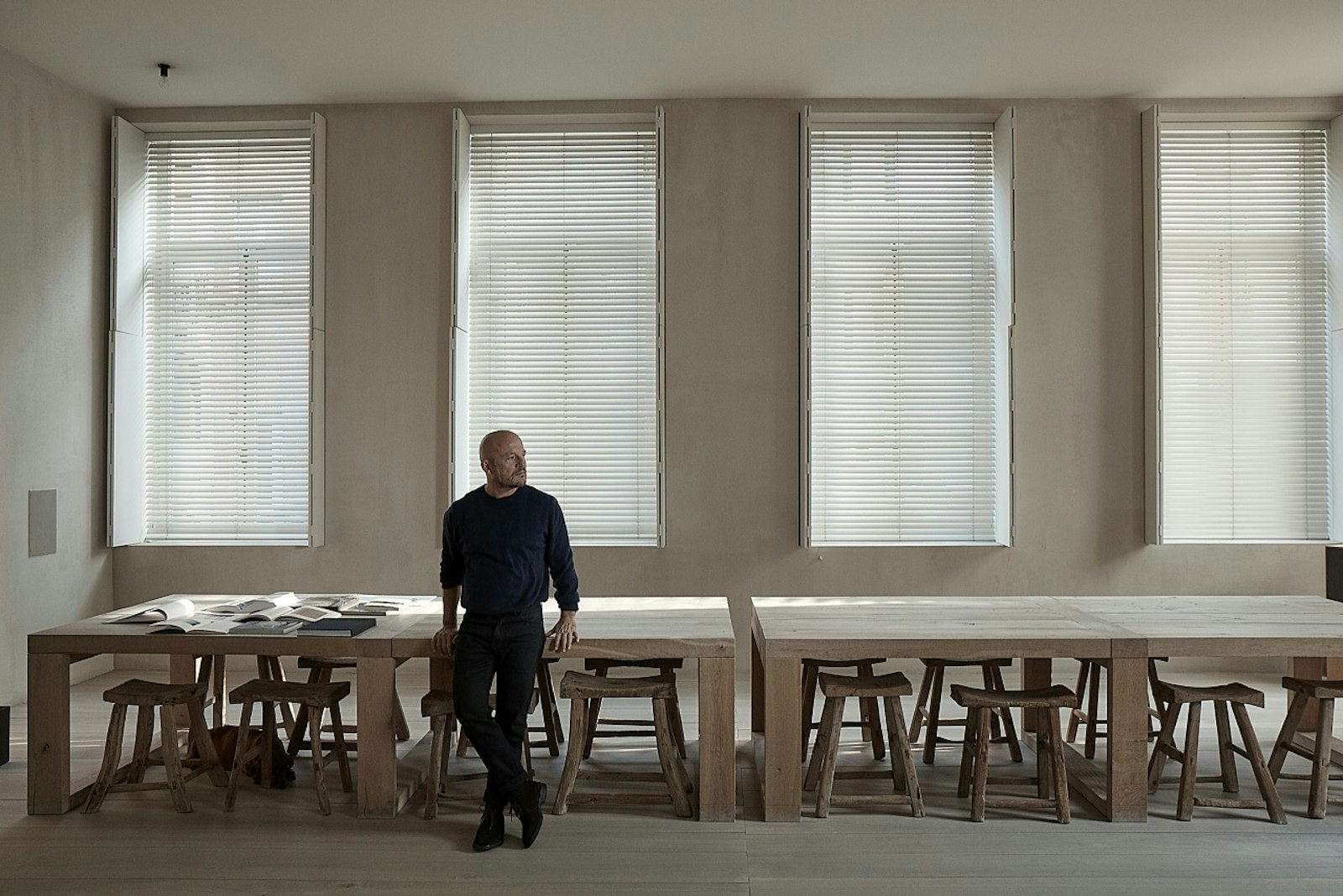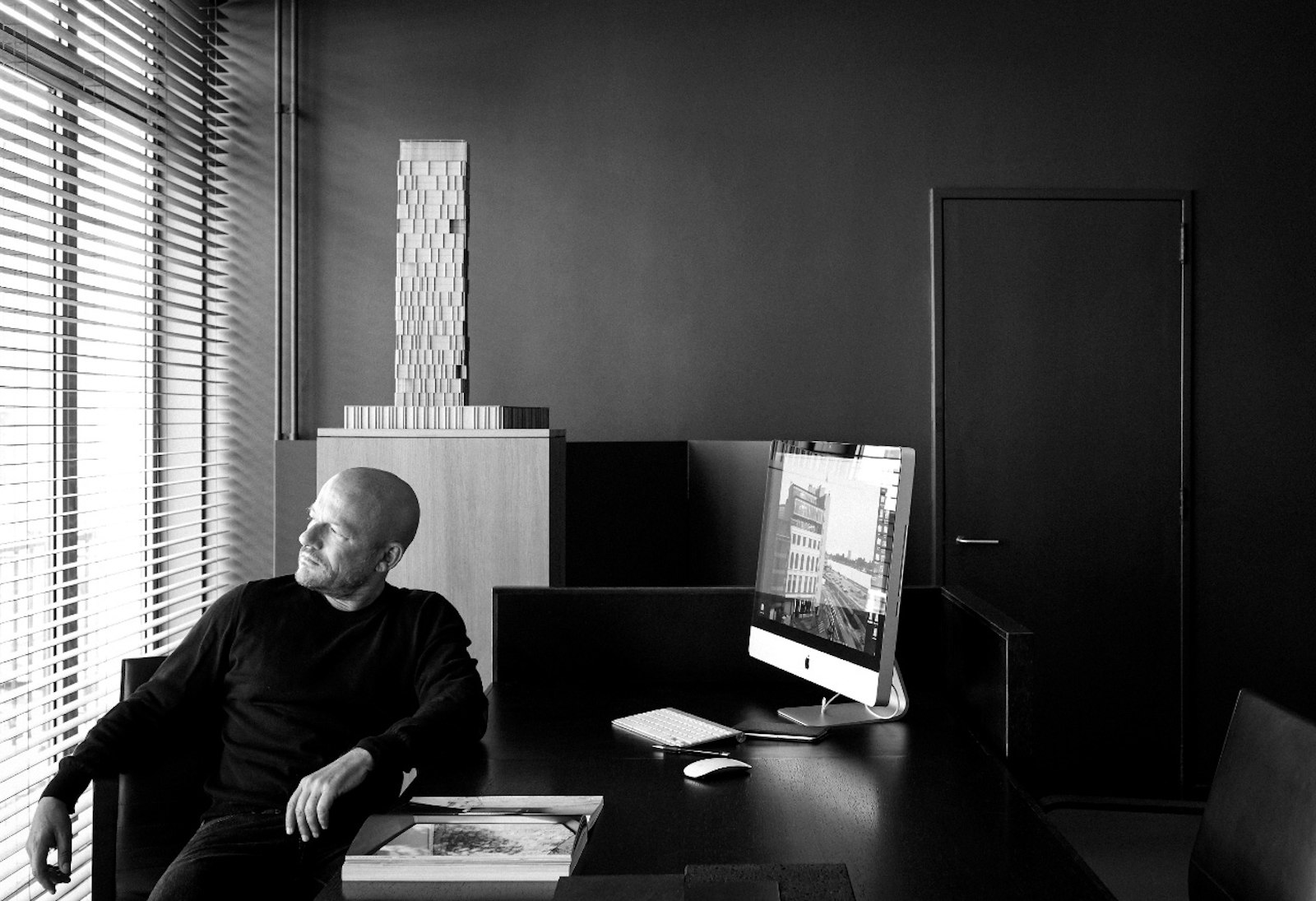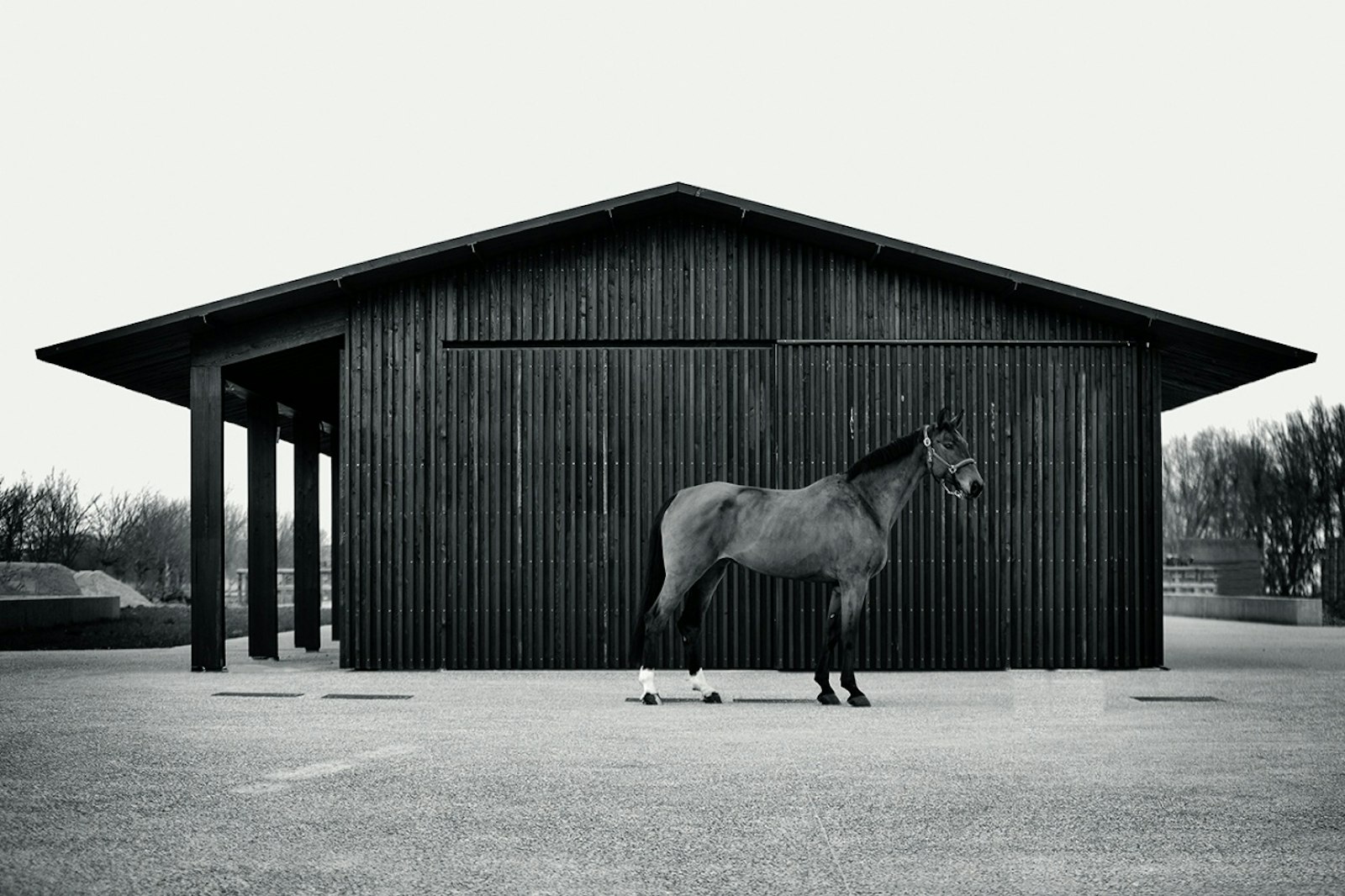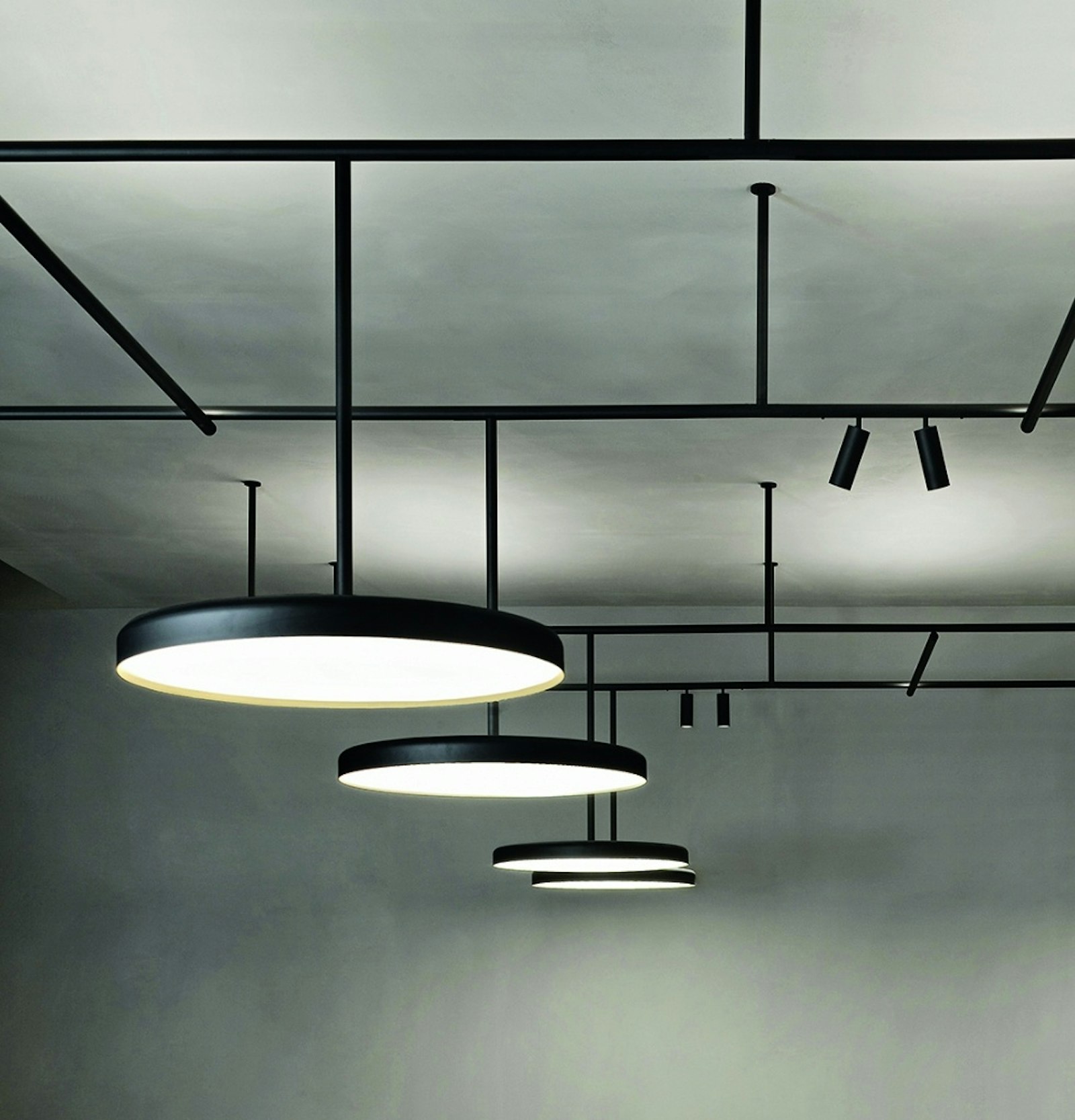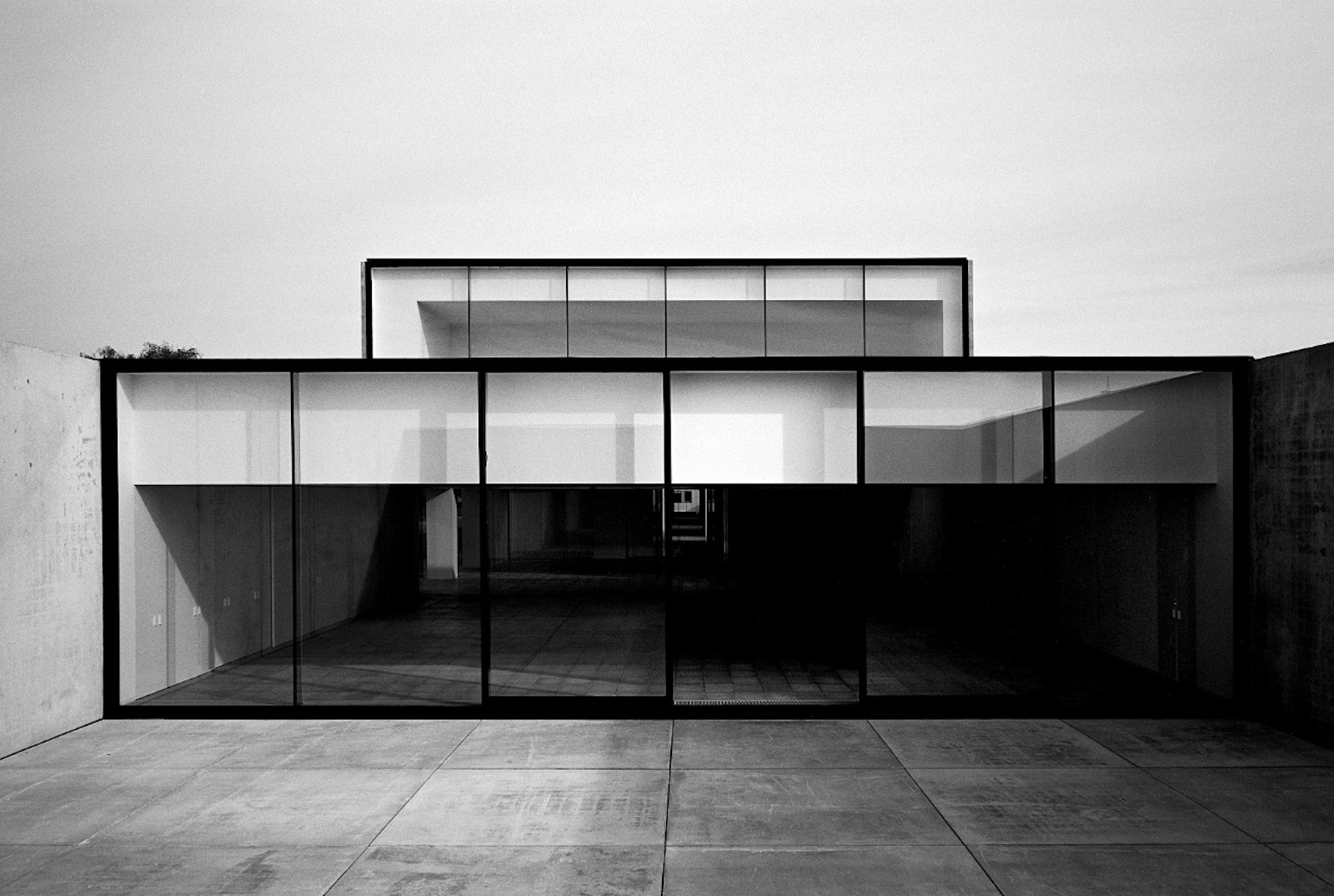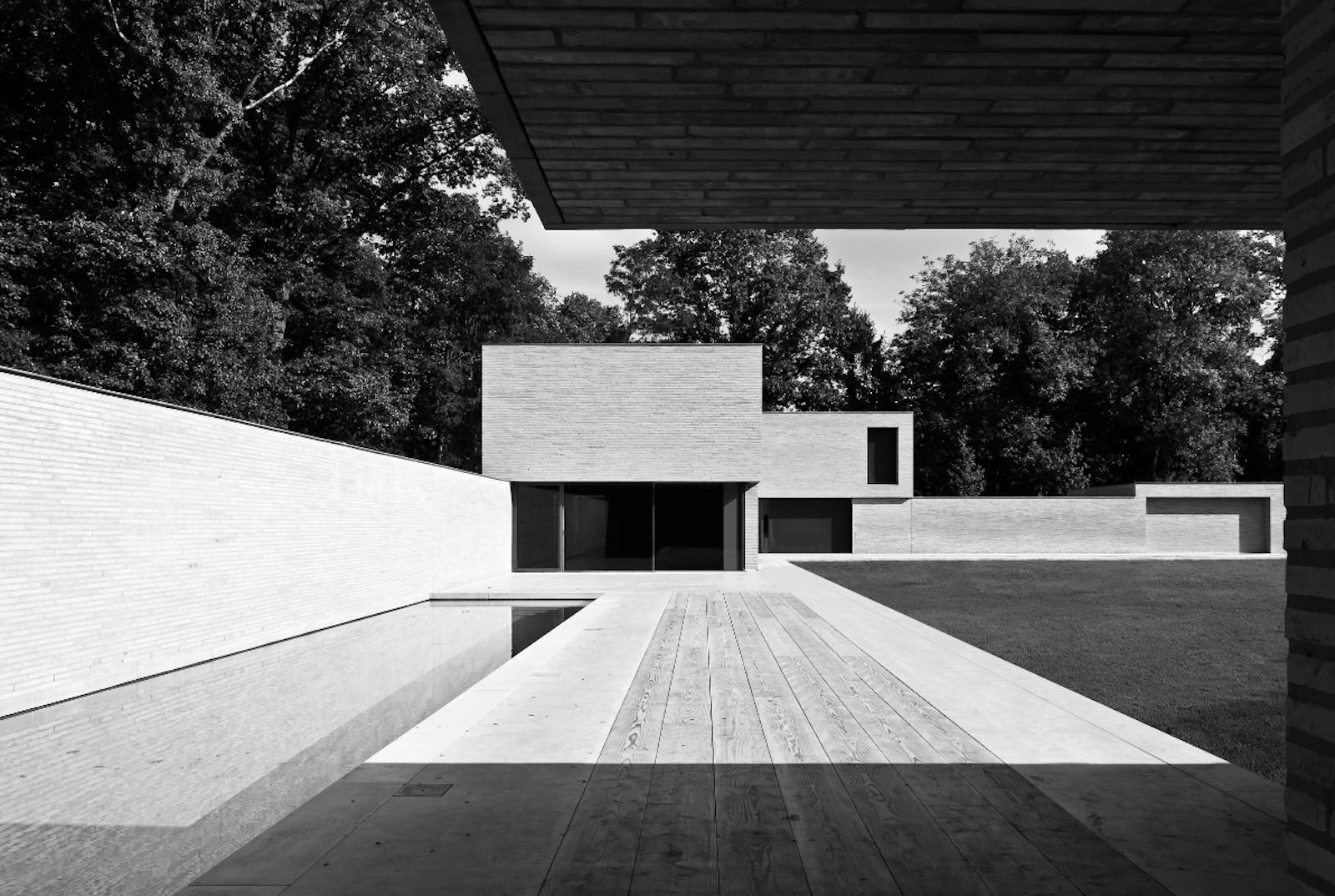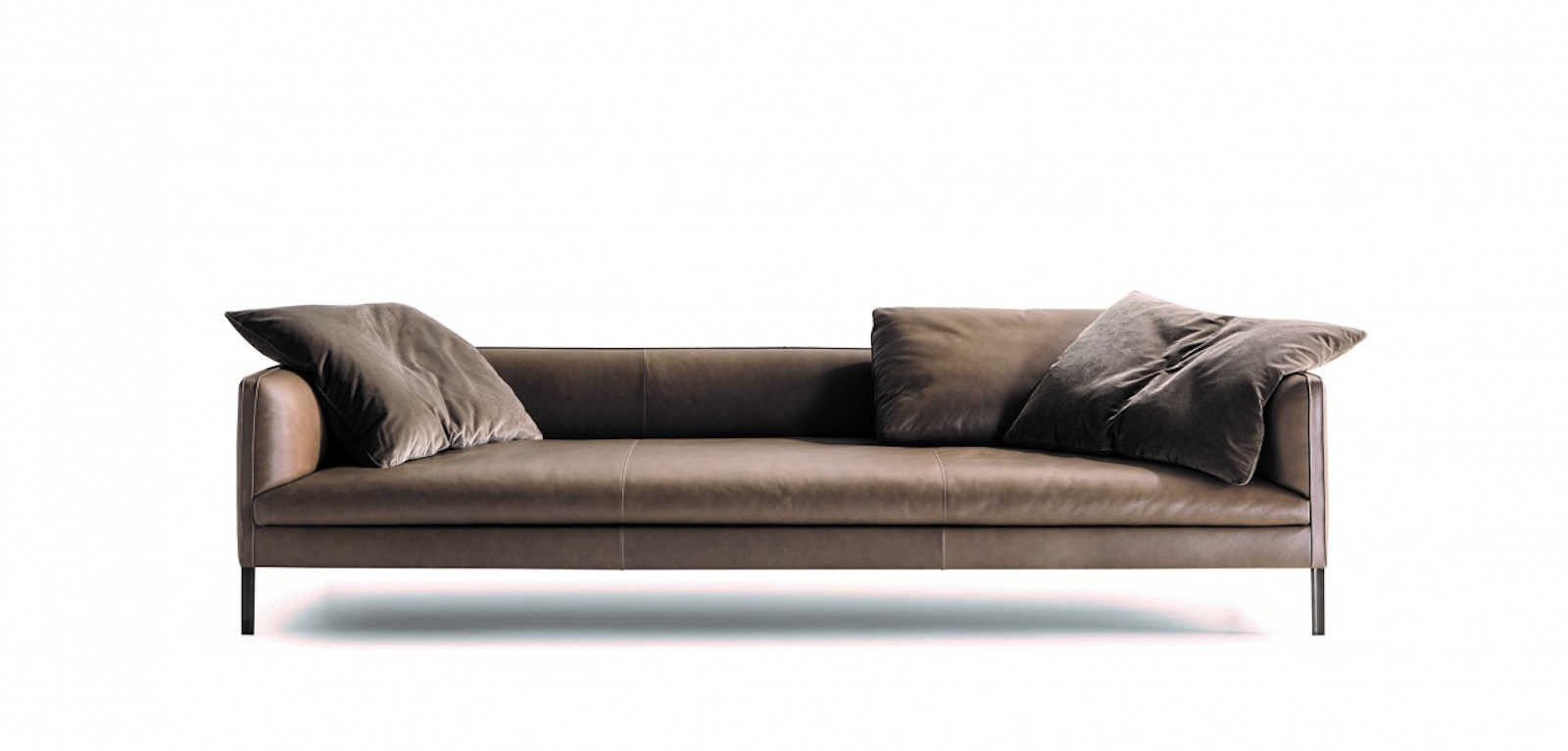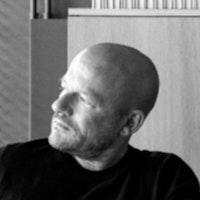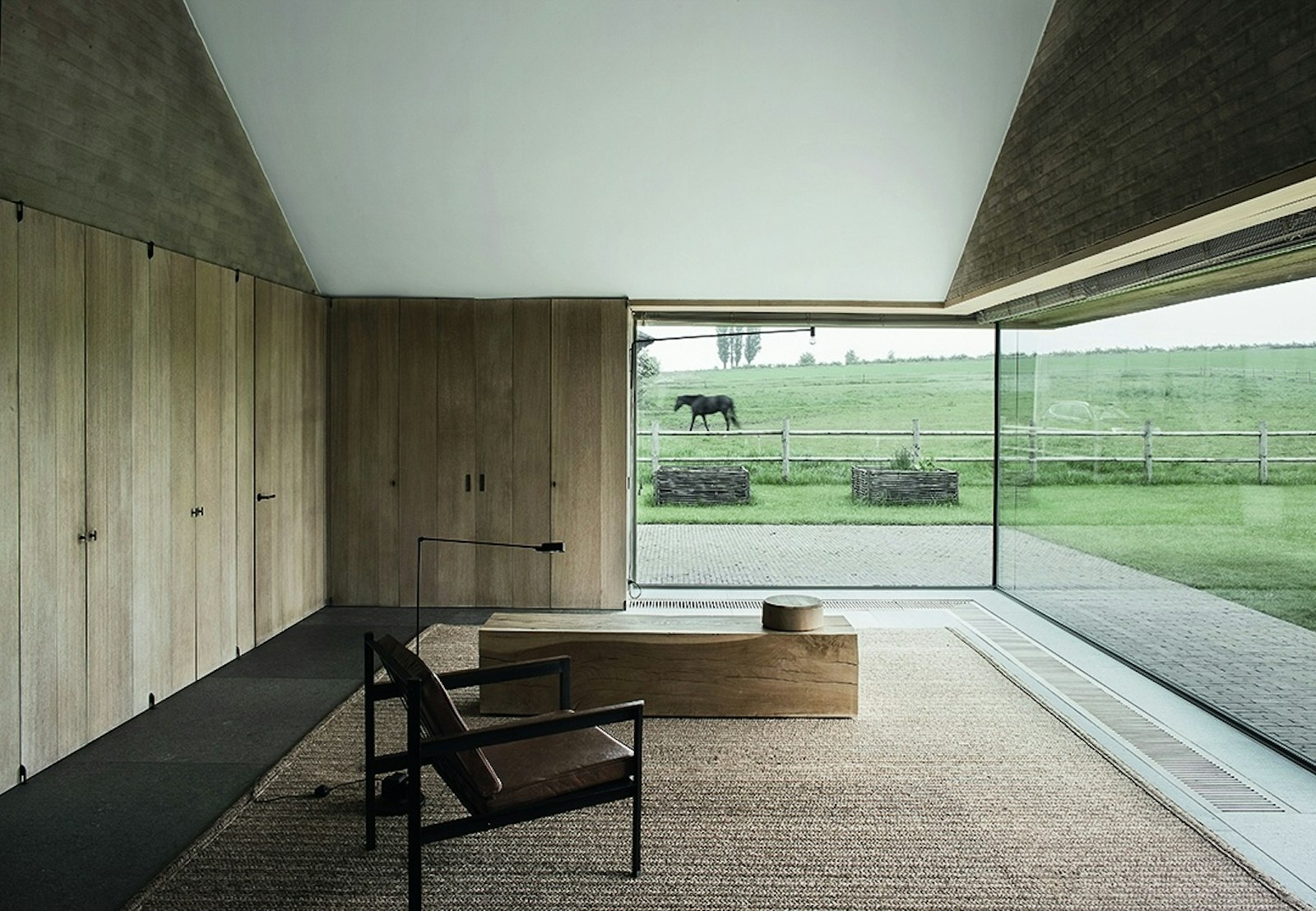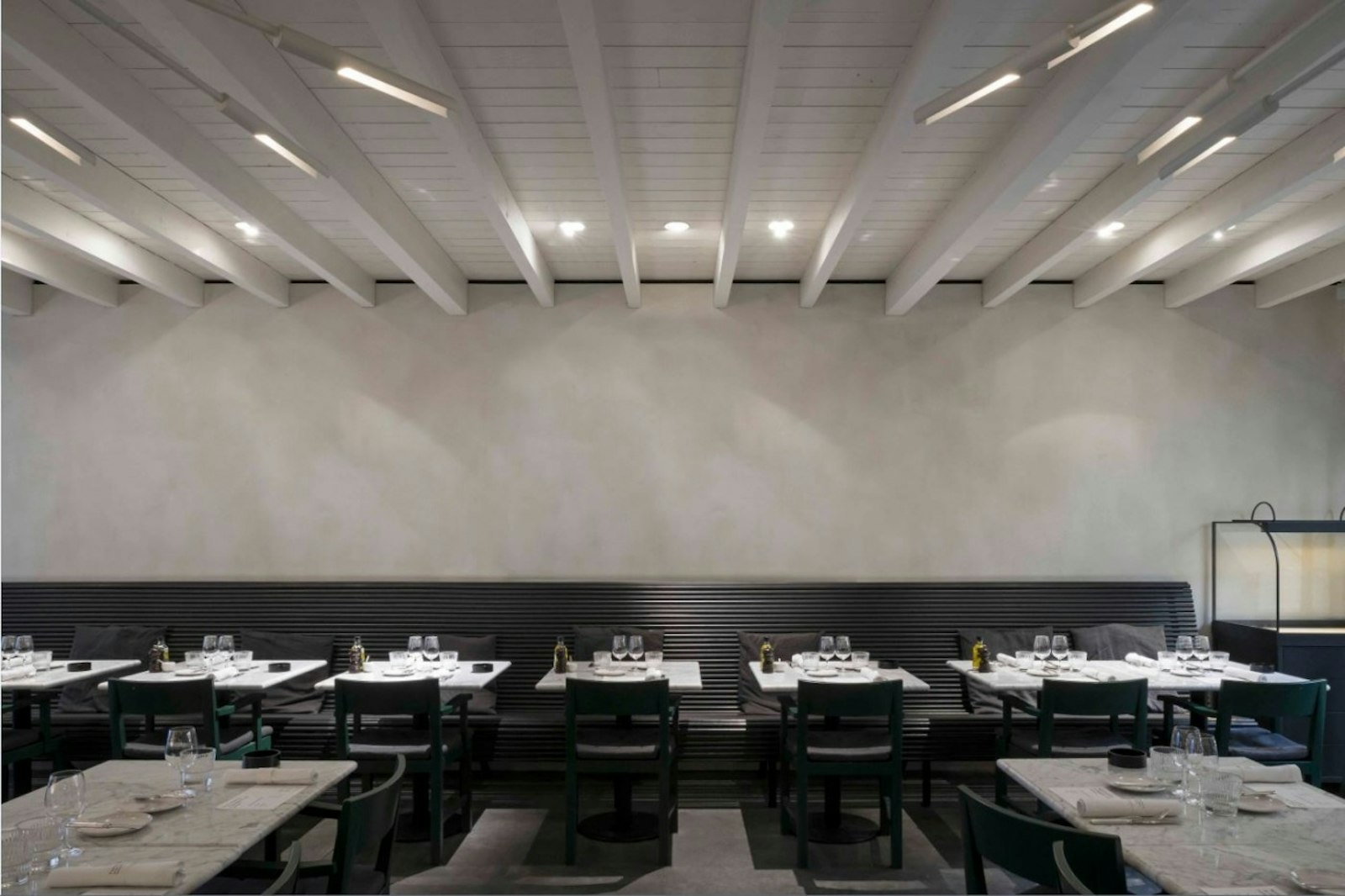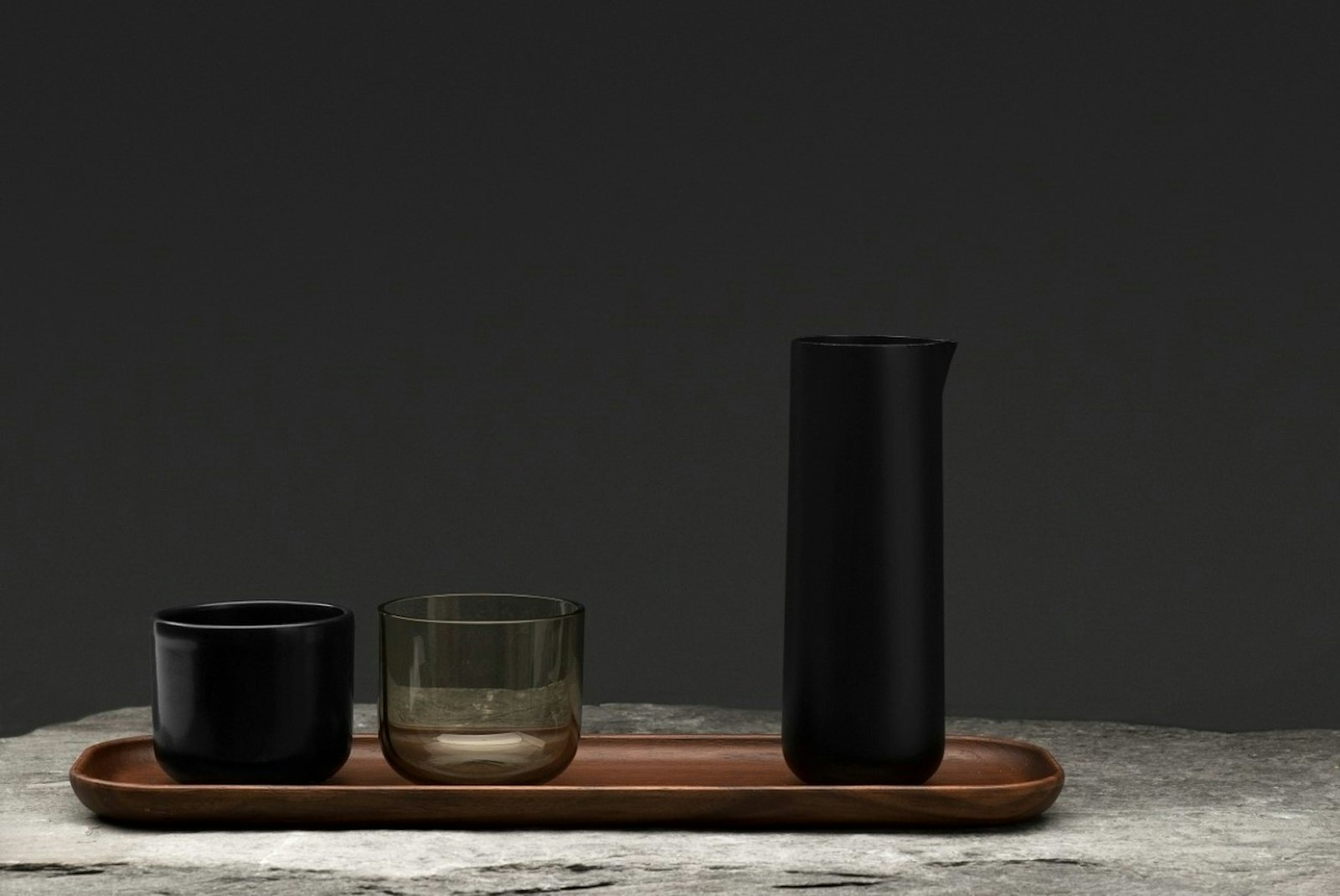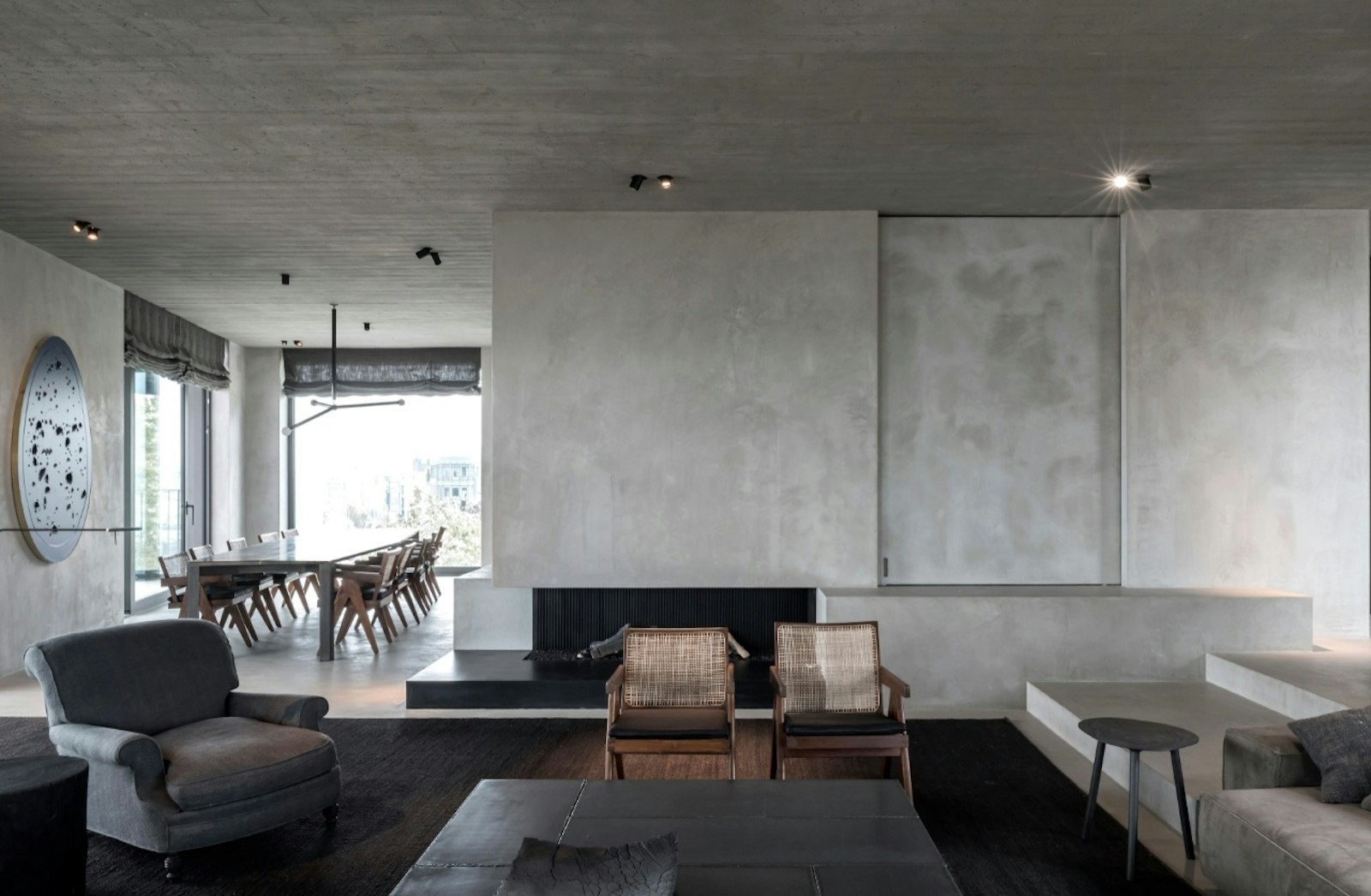de Velde
Vincent Van Duysen
“I attempt to provide answers to life’s essential questions”
Seeking a higher dimension
Just like Henry van de Velde, Vincent Van Duysen weaves together architecture, interior design and aesthetics. His restrained, sensual objects and interiors which have gained him global recognition provide a humane, sheltering refuge in this busy world.
He designs homes, shops and offices around the world, creates furniture for international design names such as Flos and Herman Miller, works as the Artistic Director for the Italian Molteni and since a few months, for the German firm of Sahco as well. His work is praised worldwide, but even so, he is visibly pleased to receive this Lifetime Achievement Award. “I can’t help but be affected by this award from my home country. It was a bit of a shock at first, though, as I certainly don’t feel I’m nearing the end of my career. It seems like I only started yesterday. At the same time, this type of thing serves to wake you up. It inspires reflection”, Vincent Van Duysen says. “That’s also the theme of my recently published third book, encompassing the third decade of my work. In this period in particular I began focusing more on product development. The poetic, analogue black-and-white images by photographer Hélène Binet emphasise the emotive power and multi-layered quality of my work.”
As a student Vincent Van Duysen already considered architecture in a wider context. “Just as in the work of Victor Horta or Henry van de Velde, for example, form and content must align perfectly, and form is inspired by function. The precise location of an object in a space is important from both a functional and an aesthetic standpoint. An interior needs resting points”, explains Van Duysen. “And conversely, furniture always functions within an architectural context, and must fit a living environment. That context is the source of the content. In Italy this interaction is much more taken for granted. Interiors are integral to the architecture, and are considered at the same level. Their word ‘abitare’ expresses this perfectly. The Italians have mastered the art of real living. It’s in their blood. They are experts at making spaces attractive, including all the objects contained therein. For example, most artistic directors at Molteni are architects. Besides, that multidisciplinary approach boosts my creativity and gives my designs more depth.”
Van Duysen waited until he was thirty to build his first home. First he completely dedicated himself to expanding his knowledge of interior design. "I’d finished my studies, but didn’t really feel ready to startdictating how others should build and live. At the same time, I’m an epicurean, and was interested in figuring out how to incorporate beauty into life inside a home. As postmodernism was in full force at the time, I gathered my courage and approached Cinzia Ruggeri in Milan. She was a member of Alchimia, a movement combining architecture, interiors and objects into a single world. A fashion designer herself, she was looking for a young architect to draw her new line of design objects. I was able to freewheel to my heart’s content. It was the ideal place to be”, says Van Duysen. "Besides, Milan is an epicentre of beauty, with its historic buildings, temples to design and fashion and culinary delights. Furthermore, I've always felt part-Italian myself; that Italian flair appeals to me enormously.”
Six months on, his Milanese adventures led him to Aldo Cibic, a prominent member of Memphis. "After the overkill of complex shapes and colours, Cibic wanted his Standard collection to feature a series of very simple furniture pieces. As his first assistant I drew most of those. Each recognisable, almost abstract design had a twist thanks to the use of material, detailing, proportion and colour. That lent me a strong impetus, and became a turning point. I discovered my love of simplicity and essentiality there”, says Van Duysen.
Back in Belgium, Van Duysen studied first under Jean Jacques Hervy in Brussels and then Jean De Meulder in Antwerp. “For Hervy it was all about ‘the art of living', designing for people. Similar to the Italians, he felt a house should fit like a second skin. DeMeulder encouraged me in my quest for an elegant essentiality, without forsaking comfort and well-being.”
Not design but shapes
Van Duysen intuitively melds all these experiences into his own highly individual take on ‘abitare’. "In the course of my many travels in that period I became fascinated by the primary shapes employed in other cultures. Back in Belgium, I pared down my morphology even more. In doing so I drew inspiration from these primary shapes, but certainly also from the simplicity of my Belgian background. After all, an interior must reflect the location of the dwelling too. That understated quality, the use of natural materials such as wood and stone and a limited colour range, became my signature style. The whole process happened very intuitively, as a result of my cultural background and the experiences I made my own, independent of any existing trends”, Van Duysen says. "Of course, my architectural training has a role to play as well. I always try to find the right proportions for a space or product to create interesting areas of tension. This rhythm is present in my sculptural Pottery series for When Objects Work, for example, or in Toku, for Paola Lenti. That garden pavilion functions as a sort of Japanese-inspired miniature architecture which can be divided up into various zones using screens.”
Van Duysen strives to establish a new archetype with his designs. "It’s not my intention to re-invent things. When I begin working on a new design, I first investigate the history of that specific item of furniture. I then take those traditional shapes and remove as much excess as I can to arrive at the primary shape. I also rework the scale and proportions using my architectural background, and add certain details to emphasise the materiality. That way, a new shape gradually emerges, firmly rooted in tradition. The sofa Paul which I designed for Molteni is a nice example of this. Its classic shape references the past, but different proportions provide a contemporary touch.”
"As a small country, Belgium has an enormous amount of quality companies and creative talent. The fact that we can develop our own style so discreetly and in complete freedom is probably our strength. At the same time, we do not always show enough appreciation for our own people. That is another reason why I appreciate this award so much."
Van Duysen also likes to make use of traditional choices in his materials. "I live in today’s world, and use modern technologies where these offer added value. However, handiwork is what gives fine materials their emotiveimpact. The fact that the design world has begun to value this integrity anew pleases me greatly. The design world lost its way for a long time. To me, ‘design’ had gained a negative connotation of ‘artificial and fleeting’; qualities to which I harbour a strong aversion. The tactile properties of objects should appeal to the senses. That’s why I like to work with natural materials such as Belgian blue freestone.”
Without truly realising it himself, Van Duysen gained the status of style icon. "Ilse Crawford wrote an article about my home in Antwerp titled Sensual Living, and suddenly that got picked up everywhere. Unintended, my work fit that of people such as John Pawson and Claudio Silvestrin who after the excesses of the eighties, also sought purity, authenticity and primary shapes. I’d really rather not be categorised, though.”
Silence and spirituality
From his Antwerp offices, in a building designed by the renowned Antwerp architect Leon Stynen, Van Duysen works on projects from around the world. “I’m frequently asked whether I'll move my offices. Belgium, with its lack of pretention and discreet mindset, is where I’m most comfortable, however. It’s not in my DNA to suddenly start acting differently. Half the members of our team of twenty-five are international, and we have created our own personal ‘abitare’ thanks to the cosy, family atmosphere here”, says Van Duysen. “Besides, I’m very happily involved in a number of Antwerp projects at the moment. We’re building the Schelde 21 sheltered housing and also my very first hotel, at the Groen Kwartier site. Everything is being made to measure for August. The 70-piece tableware set is under production by the Belgian Serax firm, for example. For a small country, Belgium is blessed with a great number of quality firms and so much creative talent. Perhaps it’s to our advantage that we are able to develop our own style so inconspicuously, with a great level of freedom. At the same time, our own people don’t always receive the appreciation they deserve. That’s another reason I’m so gratified by this award.”
Not just the Memphis-style overload, but our world today drives Vincent Van Duysen to seek serenity. Although during working hours he is hyperactive, absorbing various impressions, at home tranquillity is his strongest desire. “I soon realised I had a need for silence. Somewhere to slow down a bit, a safe haven as it were. However, I also strive to maintain an awareness of the world around me, and to incorporate life’s great essential questions in my work. My designs are my personal response to our growing digitisation and frequently negative news reports. To achieve an unobtrusive cosiness that one can truly come home to in all serenity, I have developed a pure but emotive, warm, no-nonsense style. As I grow older myself, I am able to incorporate more layers and depth into my designs. I want to thus invite people to live more consciously, to achieve a higher dimension that contributes to their well-being and need for silence, perhaps even leading to spirituality.”
